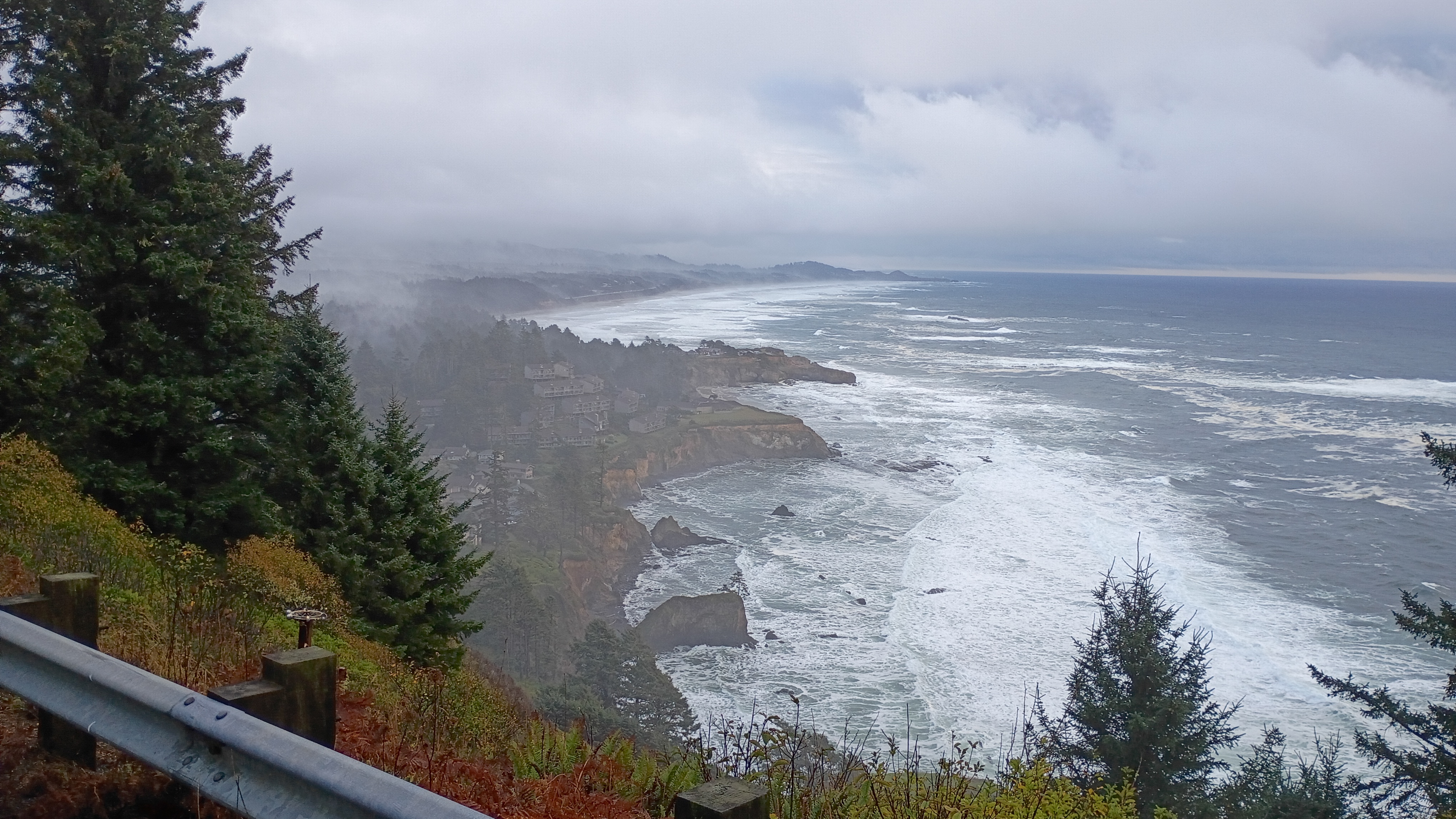
Beach hazards statement issued for two weeks now. Sneaker waves. Big rips. 'Tragic' surf rescue near Siletz Bay. Angry ocean. Big wave suffers getting towed into waves just a couple hundred meters from shore.
❄
What the salt air does to stuff on the coast.


❄
Lowtide.

❄
Don't care much for the rest of the post, but I dig the idea of an infinite friend.
So here is the stupid heresy: each particular friend is an emissary. A courier for the Infinite Friend. You’ve met them. You keep meeting them. They arrive disguised as a barista who treats you like a Victorian convalescent. As the flatmate who wordlessly slides a plate of eggs under your door when your brain has become a wasp factory. As the stranger in the smoking area who tells you, in a voice like a kettle unplugging itself, the one sentence you needed to remain alive for another week. That’s not them. That’s the Infinite Friend poking a paw through the membrane of history.
❄
Why Americans Don't Walk: A Forgotten Centennial
One hundred years ago, everyone walked in Los Angeles. Some people drove too, but the rules favored the walkers. A dense and extensive network of street railways made walking practical for most people. It was not the product of car culture, which was a nascent force. The public did not ask for it, and no referendum was held about it. Rather, it was the pet project of LA’s most successful car salesman: Paul G. Hoffman, the owner of America’s biggest Studebaker dealership. He hired a graduate student, Miller McClintock, to write it. And we don’t have to guess about Hoffman’s intentions, because he stated them himself. He commissioned the ordinance to sell more cars.
❄
Sunrise over the Columbia River Gorge.

❄
Coast

❄
The butter versus margarine debate is back on the menu in the dairy state.
A bipartisan bill introduced in the state Senate earlier this month would tighten some of the state’s enduring restrictions on margarine, the origins of which trace back to the 1800s. Wisconsin law currently prohibits serving margarine as a substitute for table butter to students, patients or inmates of any state institution. Public eating places are also barred from selling colored margarine as a substitute for table butter unless patrons specifically request it.
Screen capture of a Wisconsin law from 1885 that prohibited the manufacture and sale of “oleaginous substances” or margarine.
Violating these laws is a criminal offense and could lead to a fine between $100 and $500, imprisonment up to three months or both.
The new bill would broaden the substitution ban to apply to butter rather than just table butter. The proposed legislation would also bar public, private and tribal schools from serving the substitute or including it in meals served to the same students. Exceptions apply for individual students with specified needs<
❄
Thankful.
❄
What Actually Happens At The End Of 'Trading Places' and the Eddie Murphy Rule
In other words, Winthorpe and Valentine have contracts allowing them to buy millions of pounds of orange juice in April for 29 cents a pound, and to sell it for $1.42 a pound. They sold high and bought low. They're rich. The Dukes made the opposite bet and went broke.
One interesting kicker to the story: Trading commodities on inside information obtained from the government wasn't actually illegal when the movie came out, but it's illegal now. It was banned in the 2010 finance-overhaul law, under a special provision often referred to as the Eddie Murphy Rule.
caveat lector